Pepper is one of the most favorite vegetable crops from professional gardens and lovers. Especially enjoys a special attitude sweet Bulgarian pepper and its various varieties. This type of pepper is distinguished by high yields, sweet taste and large fruits. In this article, we consider one of the varieties of Bulgarian pepper - Pepper Cockada, which occupies a special place in the line of varieties of this vegetable.
Features and description of pepper cockatoo
Bulgarian pepper is one of the popular species that has its own unique features and beautiful taste. His homeland is rightfully considered Central America, namely Mexico and Guatemala. Cultivate pepper as a vegetable started in America, then in Spain and Portugal. In Russia, sweet pepper began to be redeemed a little later and was imported there from Turkey.
To date, this vegetable culture is the most popular export and import. The leaders in this market are China, India and Hungary.
There are about 100 varieties of sweet peppers who have their own distinctive features and are good in their own way to grow in Russia.
One of the most popular varieties is sweet pepper Cockada. It has excellent properties that allow you to get a large crop of sweet and fleshy pepper.
Pepper Description Cockada:
- Pepper Cockada refers to sweet varieties. The hybrid received its name for the similarity with the beak parrot with a bright cacada.
- This is a hybrid variety that refers to the early ripening time. The first harvest can be collected after 105-110 days after planting seeds in the ground.
- Pepper Cockada may have red and yellow color depends on a particular variety. Yellow pepper Cockada has smaller sizes in comparison with red.
- It is characterized by large fruits, which can be in length 20-25 cm. The average weight of one fetus is 500 grams.
- The pepper bushes themselves are tall, height can reach 150 cm. They differ in good branchiness and spread, there is a large number of foliage.
- The fruits of pepper cacada may have an oblong cylindrical shape, slightly curved.
- The pepper of this variety has very fleshy walls, which can reach 10 mm in thickness.
- Sweet pepper is distinguished by an excellent and juicy taste, ideal for salads, as well as for pickling and preservation.
- Pepper Cockada is a thermal-loving culture prefers to grow in closed greenhouses and greenhouses. If you grow it in southern territories, you can use open ground.
- The main condition for obtaining an excellent harvest is the constant presence of sunlight on the beds. When it is not enough, the leaves on the pepper bushes are beginning to shrust.
- The grade of pepper cacata is characterized by a large yield - somewhere 2.5-3 kg from the bush.
- Sweet pepper is a very useful vegetable - in its composition there is a large amount of vitamins and minerals.
Photo Gallery Pepper Cockada
Below you can see all the features and differences of the variety in the photo of Pepper Cockada.
Red Pepper Cockada:
Yellow Pepper Cockada:
Sowing seeds and preparation of pepper cacada seedlings
If you decide to plant pepper cockatoo on your site, you must carefully select seeds and prepare the soil. All this is necessary to obtain a healthy seedling, which will subsequently bring a rich harvest.
The process of preparing and sowing seeds
The first stage in obtaining an adult bush of sweet pepper Cockada is the proper preparation of seeds and their sowing. You need to start doing this at the end of February. Pepper seeds are very delicate and quickly lose their freshness. To be confident in a successful shoot, you can spend some actions with seeds: processing by trace elements, disinfection, wrapping, hardening, bubbling. However, you should not perform all these actions, enough one or two. Let's consider here you consider each process.
- Selection of seeds. First of all, it is necessary to select high-quality seeds. To do this, prepare a solution with water salt, the proportion of 30-40 grams of salt per 1 liter of water. After that, lower the seeds in this solution, mix and let it stand for 5-10 minutes. Good and full seeds should stay at the bottom of the dishes. They need to get and dried. This is held before sowing.
- Disinfection. This process is carried out by the potassium permanganate solution, which seeds are lowered for 10 minutes. After that, they need to be rinsed and dried.
- Enrichment by trace elements. This action with seeds can be spent a couple of days before sowing. For this, seeds place in gauze bags and lower them into a solution containing trace elements. Keep seeds in solution needed 12-24 hours. Then get and dry.
- Soaking seeds and their extension. This method is the fastest, as the seeds begin to germinate after a day. For this, the seeds are put in gauze, we can slightly wet and placed in a warm place. You need to plant such seeds only in wet land.
- Barbing. This method is much more effective, but it is necessary to conduct it 1-2 weeks before sowing. It is necessary to take high dishes, fill it on 1/3 with water, placing the tip of the aquarium compressor to the bottom. After the appearance of bubbles, pumped seeds. The duration of the procedure is 24-36 hours.
After spending a few such actions, you get ready-to-land seeds. For sowing you can use cups or wooden boxes. Soil peppers require fertile, loose and breathable. Seying seeds need not very deeply - 1.5 cm. Be sure to cover the films with the films and put in a warm place.
Growing seedlings
Properly prepared and sown seeds are the key to getting a healthy seedlings. Therefore, after sowing seeds, you need to carefully and carefully follow the appearance of shoots. For the first few days, you can hold the box near the warm battery in the shade. And then you should set it to the window in the sun.
The optimal temperature for the growth of pepper seedlings is 24-26 degrees during the daytime and 15-17 degrees in the night. The seedlings are very light, so many are recommended to be heated with artificial lighting, so that the light day amounted to 13-14 hours.
It is necessary to water the peppers every morning with warm water, but just follow the water stagnation in the box or cups. Seedlings must be turned to grow proportionally.
Cultivation of seedlings requires feeding. It is held twice. The first feeding is needed by a plant when the first two leaves appear on it. As a fertilizer, use a solution of urea, phosphate, potassium salt and water. The second dressing is carried out two weeks after the first with the same fertilizer.
For a while, before disembarking, it is necessary to temper it. You can begin to endure to a balcony for a while or to a greenhouse, but under the condition of the air temperature is not lower than 12 degrees.
When seedlings sucked enough, you can proceed to its transplant in open ground. Only to start correctly pick up the place and the soil.
Choosing a place and soil preparation for planting a grade of pepper cacatoo
Pepper Cockada is a thermal-loving plant, so it is recommended to plant only in greenhouses or greenhouses. If you live in southern regions where there are no sharp weather drops and strong cold weather, you can plant peppers into the ground.
In any case, Pepper Cockada loves a large number of sun. Therefore, beds or a greenhouse must be placed in such a place where the sun shines most of the day. It is also best to plant a pepper cockatoo on the hills, as in lowlands there may be stagnation of water, and this is harmful to the plant.
The soil for peppers is needed fertile, it is better to buy a special mix in stores. But you can prepare yourself. To do this, the fertile land is mixed with a large number of peat for better oxygen enrichment roots, as well as add wood ash and compost.
Transplanting Pepper Cockada to Outdoor Soil
Replanatory seedlings to open ground or greenhouse only after establishing warm weather and when there is no probability of night frosts.
Pepper Cockada Transplanting Process:
- It is possible to plant seedlings in the southern regions at the end of May, and in the Northern - in the early middle of June.
- A seedlings are suitable for transplant, which is already more than 55 days and its height reaches 15 cm.
- First you need to prepare a bed. For this, the wells are digging according to the following scheme: 50-60 cm between wells in one row, about one meter between rows. If you make a distance less, you can reduce yield and slow down the growth of the plant.
- It is necessary to engage in planting seedlings early in the morning or in the evening.
- The well is worth digging up not very deep and then rolish with water. One hole is approximately 1-2 liters of water.
- Then put a seedling in the well and sprinkle the earth.
- The earth around pepper should be sealing with hands and inspired by humus.
- It is plenty of planted seedlings.
Further actions in the process of growing pepper Cockada are constantly leaving the pepper, its irrigation and feeding.
The main stages of Cockada Pepper
The yield of pepper directly depends on attention and care. The process of care of pepper Cockada includes several stages. Read more consider each of them.
- Watering. Pepper Cockada loves moisture, so it is necessary to water it often and abundantly. When growing in a greenhouse, it is necessary to water every 2 days if in the open soil - at least once a week. It is important to note that watering the pepper is needed only with warm water (18-20 degrees).
- Loosening and mulching. It is necessary to loosen the earth immediately after watering so that oxygen flows to the roots. At the same time, it is necessary to carry out mulching. As a mulch, use compost, boring or wood ash. This will protect the plant from drying and growing weeds.
- Fertilizer. High yield depends on timely fertilizer. For all the time growth of the plant, fertilizer should be made from 4 to 8 times. As a fertilizer, you can use both the organic and mineral. The first feeder is made 14 days after the seedlings landing. Urea or chicken litter used, divorced in water. The next time you can make fertilizer during flowering. At this stage, you can water a solution of chicken litter or a cow. It is useful to spray the leaves and buds of plants with a solution of ash and water.
- Trimming shoots. This stage in the care of pepper Cockada is very important. The formation of the bush can already be started at the growing stage of seedlings. It is necessary to trim the secondary shoots, as well as weak to increase the yield and size of fruits.
- Harvest. You can collect the harvest after reaching the bottom fruits of the pepper cockada of the desired size. It is necessary to tear off gently so as not to damage the plant itself. Usually the collection is carried out every 2-4 days.
- Fighting pests and diseases. Very important stage of pepper care. The main pepper disease is phytoofluorosis, for the prevention of which the Bordeaux liquid solution can be used. With progressive disease, it is necessary to spray the plant with special preparations: "Fitodoculator", "Barrier". Often, peppers are subject to such a disease as the vertex rot. A solution of copper sulfate helps to cope with it. From pests should be noted the TRU and the web tick. When they appear, it is necessary to spray the plant with a solution of ash with water. If it does not help, carbofos, "accomplishing" preparations are used.
Sweet pepper is not at the most valuable and healthy vegetable. It contains in its composition a large number of vitamins and minerals needed by the human body. Therefore, growing pepper cocada on its plot, you will have our natural vitamins all year round.

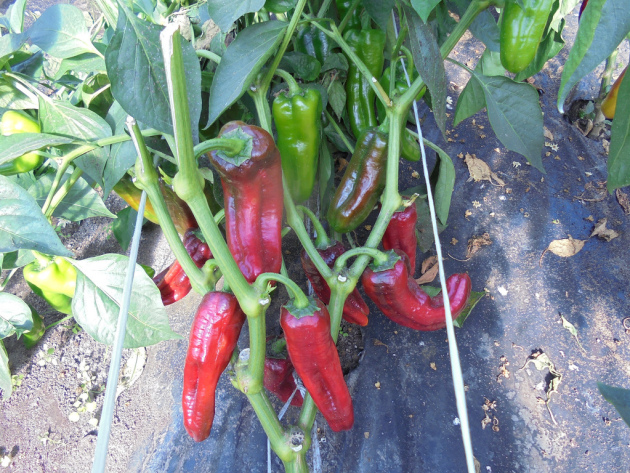
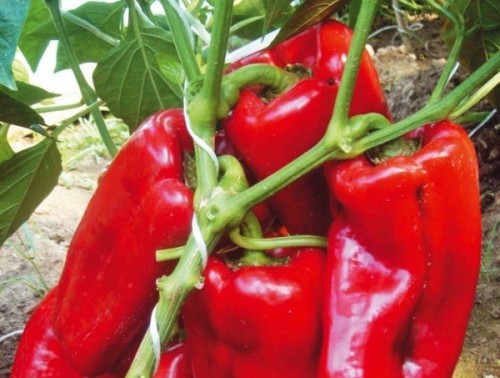
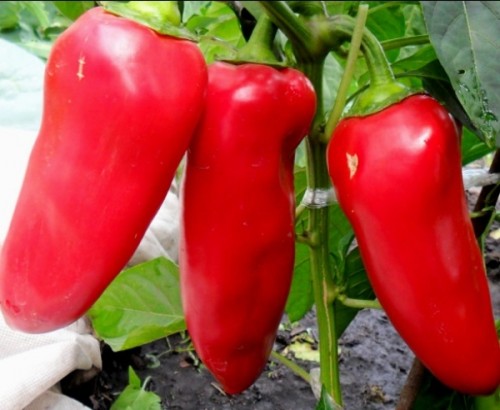
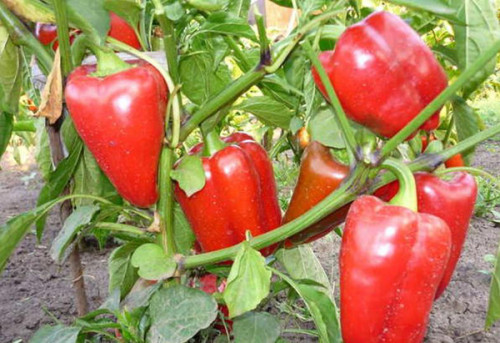
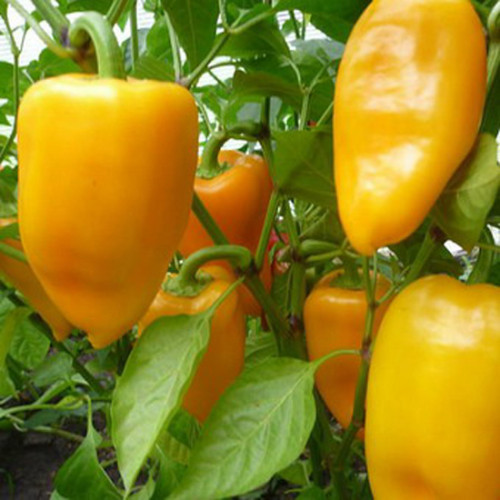
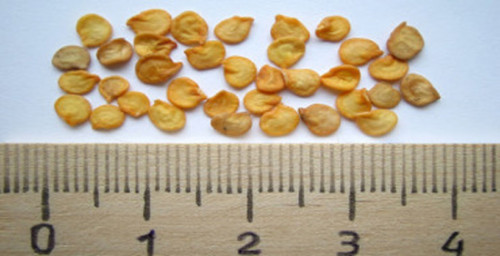
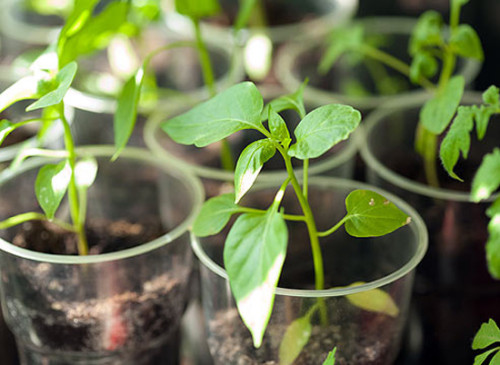
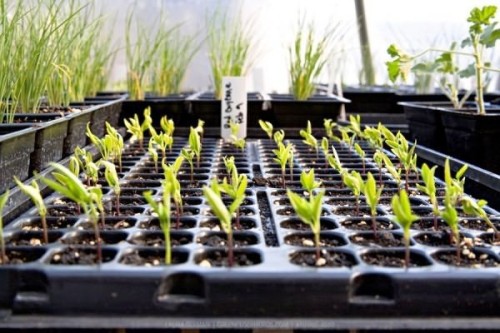
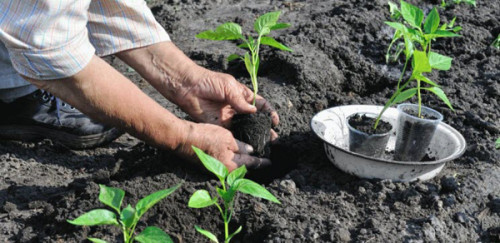
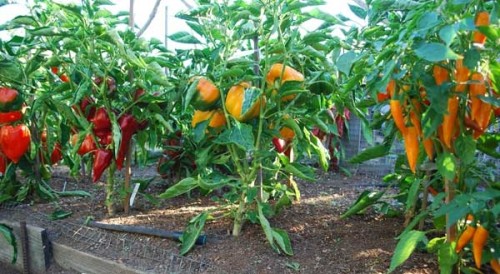
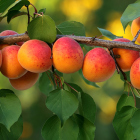

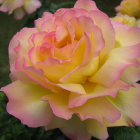
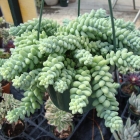
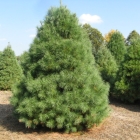
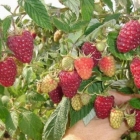
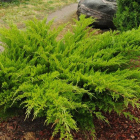
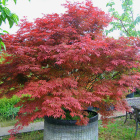
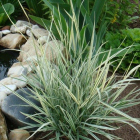
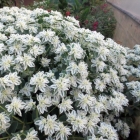
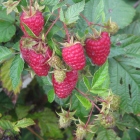
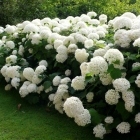
 Start a discussion ...
Start a discussion ...